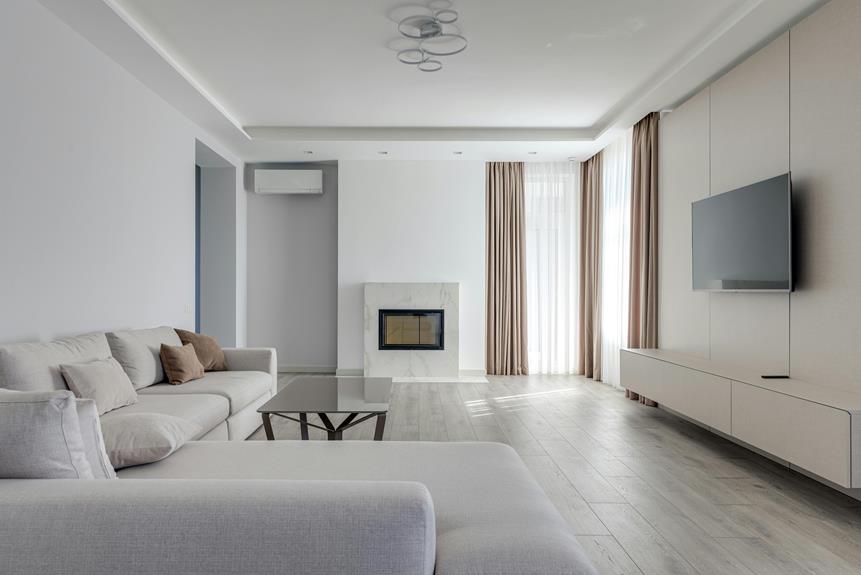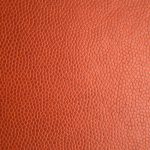When you consider modern interior design, damask might not be the first fabric that comes to mind, but its impact is undeniable. You can use its intricate patterns and rich textures to add both sophistication and warmth to your spaces. Whether it's through curtains, upholstery, or accent pieces, damask brings a level of elegance that can transform a room. However, understanding how to effectively integrate this classic textile into contemporary designs can be a challenge. What are the best ways to blend damask with other styles without overwhelming your aesthetic?
Table of Contents
Historical Significance of Damask
Damask, with its rich patterns and luxurious feel, has woven its way through history as a symbol of elegance and craftsmanship.
Originating in the Middle Ages, this textile emerged from the city of Damascus, where skilled artisans mastered the art of weaving intricate designs into fabric. As you explore its history, you'll discover how damask became a favorite among royalty and nobility, showcasing their wealth and taste.
You might find it fascinating that damask was initially crafted from silk, but as it gained popularity, it transitioned to include a variety of fibers, including linen and cotton. This versatility allowed damask to flourish across different cultures, from Europe to Asia. Each region adapted the patterns and techniques, creating unique interpretations that reflected their artistic heritage.
As you delve deeper, you'll notice that damask's distinctive reversible patterns added a layer of sophistication to garments and home furnishings. It became synonymous with opulence, often used in draperies, upholstery, and even ecclesiastical vestments.
Understanding its historical significance not only enriches your appreciation for this fabric but also highlights the timeless allure that continues to captivate designers today.
Modern Applications in Interiors
When you think about incorporating damask into your space, consider how it can transform textiles and upholstery. You can use it for statement furniture pieces or subtle accents that enhance your decor.
Additionally, wall treatments featuring damask patterns can add depth and sophistication to any room.
Textiles and Upholstery
Incorporating damask textiles and upholstery into modern interiors can instantly elevate the aesthetic, adding depth and sophistication to any space. You can choose damask for various applications, from elegant drapery to statement upholstery on furniture. Its intricate patterns and rich textures create a focal point, enhancing the overall design.
Consider these modern applications for damask textiles:
| Application | Description |
|---|---|
| Drapery | Use damask for floor-to-ceiling curtains, creating an opulent look. |
| Upholstered Sofas | Choose damask for a contemporary sofa, adding a luxurious touch. |
| Accent Pillows | Mix damask pillows with solid colors for a chic contrast. |
| Bed Linen | Dress your bed in damask to transform your bedroom into a retreat. |
| Throw Blankets | Use damask throws to add warmth and elegance to any seating area. |
Wall Treatments and Accents
Often, using damask as a wall treatment can transform a room, adding texture and visual interest that complements modern design elements. You'll find that damask wallpaper or fabric can create a stunning backdrop that enhances contemporary furniture and décor. Its intricate patterns can break the monotony of flat surfaces, drawing the eye and sparking conversation.
When you apply damask in accent walls, it can serve as a focal point, making the space feel more dynamic. Consider placing it behind a sleek sofa or a minimalist bedframe to elevate the overall aesthetic. You can also use damask in smaller applications, such as framed panels or as part of a gallery wall, to introduce elegance without overwhelming the space.
If you prefer a more subtle approach, choose a damask pattern in muted colors to maintain a modern feel while still enjoying its luxurious quality. Pair it with modern lighting and sleek accessories, and you'll create a balanced atmosphere that feels both inviting and chic.
Ultimately, incorporating damask into your wall treatments and accents allows you to express your personal style while embracing modern design principles.
Color Palettes and Patterns
Damask patterns bring a rich array of color palettes that can transform any modern interior into a sophisticated haven.
Whether you prefer bold hues or soft pastels, damask offers something for every taste. Think deep jewel tones like emerald and sapphire for a dramatic effect, or opt for light neutrals like cream and beige to create a calming atmosphere.
You'll find that the intricate designs of damask patterns often feature contrasting colors, which can add depth and visual interest to your space. For instance, a classic black and gold damask can serve as a stunning statement piece, while a subtle grey and white combination can blend seamlessly into a minimalist decor.
Incorporating these patterns into your home isn't just about the colors; it's about how they interact with your existing decor. Pairing damask with solid colors enhances its elegance, allowing the patterns to pop.
You can use damask in upholstery, drapery, or even accent pillows, ensuring that the colors harmonize with your overall design scheme. Remember, the key is to choose palettes that reflect your personality while maintaining balance within your space.
Combining Damask With Other Textiles
When you combine damask with other textiles, you create a layered look that adds depth and richness to your interior design. Start by selecting complementary fabrics that enhance the intricate patterns of damask. For instance, pairing damask with solid colors can help the damask stand out, while subtle textures like linen or velvet provide a touch of contrast.
Think about mixing damask drapes with a patterned throw or pillows in complementary hues. This combination not only adds visual interest but also creates a cozy atmosphere. You can also use damask as an accent on furniture, such as upholstered chairs, while incorporating other textiles like cotton or wool in the surrounding decor.
Don't shy away from experimenting with scale and pattern. A large damask print can beautifully contrast with smaller geometric designs, bringing dynamic energy to the space.
Lastly, consider the weight of the fabrics; light and airy textiles can balance out the opulence of damask, ensuring your design feels harmonious rather than overwhelming. With thoughtful combinations, you can elevate any room, making it both stylish and inviting.
Damask in Furniture Design
Incorporating damask into furniture design instantly adds a touch of elegance and sophistication to any space. You'll find that damask patterns, with their intricate designs, can transform ordinary pieces into stunning focal points. Whether you're reupholstering a vintage chair or selecting a new sofa, choosing damask fabric elevates the overall aesthetic.
When you use damask on upholstery, it brings both texture and depth to your furniture. Opt for bold colors to make a statement, or softer hues for a more subtle approach. Damask-covered ottomans or accent chairs can serve as eye-catching additions, allowing you to play with patterns and colors throughout the room.
Additionally, consider incorporating damask in your furniture's structural elements. A damask-patterned cabinet or console table can act as a striking visual element while also providing practical storage. Even small touches, like damask drawer liners or cushion covers, can enhance the overall design scheme.
Ultimately, the versatility of damask allows you to express your unique style while maintaining a sense of classic charm. Embrace the beauty of damask in your furniture choices, and watch your space come alive with elegance.
Tips for Incorporating Damask
How can you seamlessly introduce damask into your interior design while maintaining balance and harmony?
Start small. Choose a single accent piece, like a damask throw pillow or a small ottoman. This adds texture without overwhelming the space.
Next, consider your color palette. Damask patterns often feature rich hues, so select colors that complement your existing decor. If your room is neutral, a bold damask print can serve as a striking focal point. However, if your space is already vibrant, opt for a subtler pattern in muted shades.
Layering is key. Combine damask with solid colors or other textures to create depth. For example, pair damask curtains with a sleek sofa or mix a damask rug with wooden furniture.
Don't forget about scale. If your room feels spacious, larger damask patterns can fill the area beautifully. Conversely, smaller patterns work well in cozier settings.
Lastly, keep the overall design cohesive. Ensure that your damask elements harmonize with your room's style, whether it's modern, traditional, or eclectic.
With these tips, you'll create a stunning and balanced interior featuring damask.
Frequently Asked Questions
What Is the Origin of the Term 'Damask'?
The term 'damask' originates from Damascus, Syria, where these luxurious woven fabrics were first produced. You'll find it historically linked to intricate patterns and rich textiles, symbolizing elegance and craftsmanship throughout centuries.
Can Damask Be Used in Outdoor Spaces?
Yes, you can use damask in outdoor spaces, but make sure to choose weather-resistant fabrics. It adds elegance and visual interest, but durability is key for withstanding the elements without fading or deteriorating.
How Do I Clean Damask Fabrics?
To clean damask fabrics, gently vacuum to remove dust, then spot clean stains with a mild detergent and water solution. Always test a small area first, and avoid harsh chemicals to preserve the fabric's beauty.
Is Damask Suitable for Commercial Interiors?
Yes, damask can be suitable for commercial interiors, especially in upscale settings. Its intricate patterns add elegance, but ensure durability and ease of maintenance to withstand high foot traffic and wear in those environments.
What Are the Environmental Impacts of Damask Production?
When you consider damask production, think about water usage, chemical treatments, and the energy it requires. These factors can lead to significant environmental impacts, especially if sustainable practices aren't followed throughout the manufacturing process.
- Recycling Nonwoven Fabrics: Is It Possible? - July 11, 2025
- Recycling Nonwoven Fabrics: Is It Possible? - July 11, 2025
- Recycling Nonwoven Fabrics: Is It Possible? - July 11, 2025







